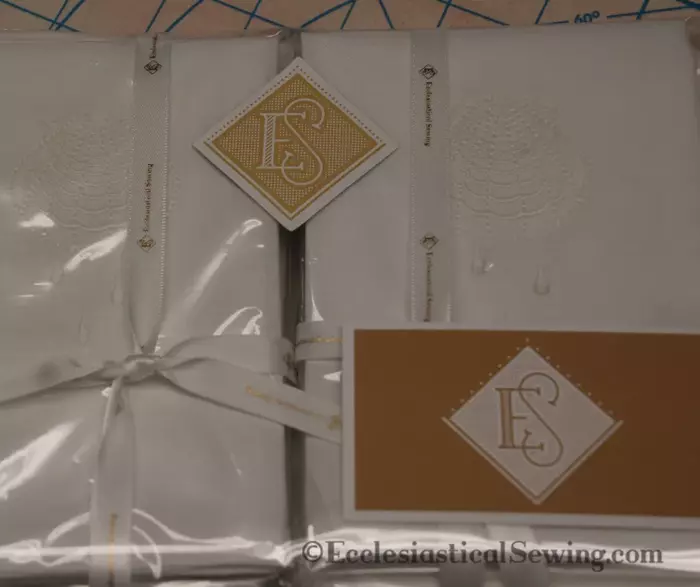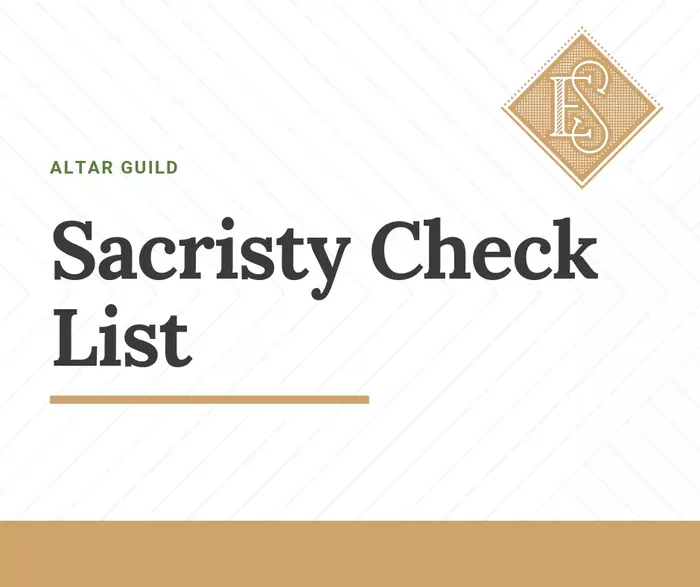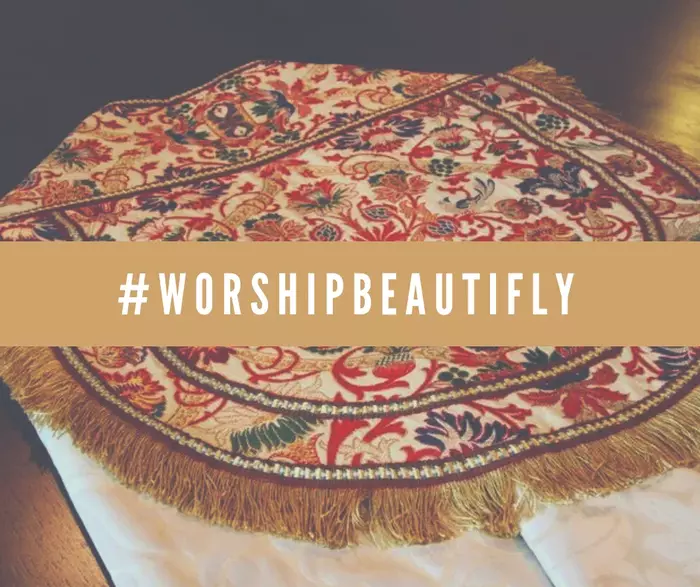Sacristy Check List: 10 Things to Review for Fall
Sacristy Check List: 10 Things to Review for Fall
As many parishioners return to their home churches after the summer months of travel and activities, fall is a perfect time to check the condition of vestments, altar linens, altar hangings, and banners used during worship. The care and keeping of the Lord’s House and the items used for Worship should be taken care of on a routine basis. Yet for many churches, taking care of all things textile-related is a challenging task. So, to aid churches in this task, here you will find the Sacristy Checklist: 10 Things to Review for Fall.
10 Things to Review for Fall
- Check all of the altar linens. The fair linen should be checked to ensure there are no stains, soil marks, wax, holes, or anything else that might make it beautiful. Hems should be checked to ensure the stitching is still intact. The embroideries should be checked for any loose threads.
- Check the inventory of small linens such as palls, purificators, corporals, and lavabo towels. If the drawers look a bit sparse, put the call out to altar guild members to return items that were taken home for laundering.
- Tidy up storage for any altar linens not currently being used.
- Check the inventory of things like baptism towels, candles, and baptismal certificates to be certain those items will be on hand for any baptisms.

- Check the altar hangings currently in use – are they in good condition? Do they need pressings, spot cleaning, or do they need any mending? Is the fringe intact or does it need repair or replacement?
- Does your church use servers such as acolytes or other servers that wear gowns for professionals? Do any of those gowns need laundering and pressing?
- Does the pastor’s alb, surplice, or cassock need laundering, pressing, or mending? Does he need help with any alterations on these vestments – either with sleeves or hems being too short or long? Does anything need to be taken in or let out? Pastors and priests often hate to ask for help with these types of alterations, so a subtle but kind question may open the door for any offered assistance.
- Are the pastor or priest’s stoles, chasubles, or other vestments in good order, or do any of these need repair? Are there any tassels of fringe that need repairing? Is a seldom-used vestment in need of pressing? Do they have proper storage and hangers?
- Do any of the banners need attention? Is there loose fringe or hems that need mending? Does anything need pressing?
- Do any of the above items look as if they are beyond the point of being serviceable in the Lord’s house? Do plans need to be made for replacing and updating items?
The last point is a touchy subject. It has to do with our thought processes when it comes to the Lord’s House. We are often complacent when it comes to furnishings used in the church. Items such as altar hangings may have been in use for as long as anyone in the church can remember. Churches use things because they are there. The fabrics may be worn, the colors faded, or the designs may be long outdated. Yet we would never consider having items in such a state within our own homes without coming up with a replacement plan. But for the church, the thought process is that it is fine to continue using these items.
Focusing on Possibilities in Church Renovation
Whenever anyone makes a comment about the sorry state of church furnishings, the default albeit is, “Our church is small. We don’t have a budget to replace these items.” Yes, there are many churches, large and small, with limited budgets. But the challenge here is the thought process and it begins with remembering we are speaking of the House of the Lord.
I understand church budgets and come from a relatively small congregation with an average attendance on Sundays of 70 to 80 people. Yet churches get caught up with the thought, “We have no money.” Pastors know this all too well. Those cries are wailed throughout the sanctuaries as a stumbling block for many a project that is needed within the life of churches.
But why should this be? Maybe it’s all in how we look at things. Rather than seeing the impossibility of a thing, think and focus on possibilities. What can we do? What can be done? Begin with prayer, read God’s word, and talk with your pastor. See the examples that are laid before us in the pages of scripture. The possibilities are endless once we start to focus and take action on them. Maybe it is as simple as a little word – Tithe. This is not just giving, but a true tithe as happened with the building of Solomon’s Temple. People are reluctant to step forward. Yet it only takes one person of vision to see a need and to motivate others to see the possibilities.
Empowering Church Community Engagement
There are always members within a church who are happy to help, either by giving their time and talents or by offering financial help. The point is, to focus on what can be done, even if it is something small, and make that happen. One thing can lead to another, and soon, mindsets can be changed as people see the once impossible being brought to life one step at a time. Faith and belief can make it possible to worship beautifully.
Soli Deo Gloria
Please visit our website at Ecclesiastical Sewing.com to learn more about our complete line of religious fabrics, trims, patterns, and church vestments.
A Simple Design Framed Up
Lovely Ecclesiastical Fabrics
Wish Lists Royal School of Needlework Style
Planning Your Lent Church Vestment Projects: a Liturgical Fabric Review
To the Rescue in the Sacristy








 RSS - Posts
RSS - Posts
You must be logged in to post a comment.